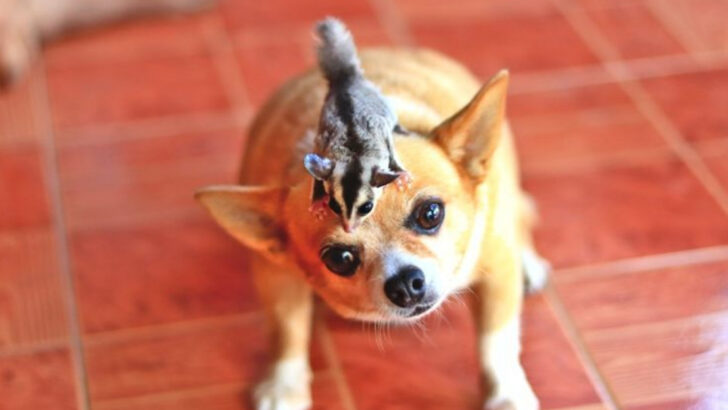Think your dog is the only one who rules the roost? Think again.
Some pets may seem harmless, but when introduced into a household with a dog, things can go from peaceful to problematic in seconds. Whether it’s a feisty cat or a quirky bird, not every animal is ready to share their space with man’s best friend.
Imagine a rabbit making a dash for freedom or a hamster rattling its cage. Add in a dog’s territorial instincts, and you’ve got a recipe for chaos. It’s not that these pets are bad, but the mix can be tricky.
Want a peaceful home where pets coexist like a well-rehearsed band? Read on to discover which animals might cause a ruckus—and which ones should probably stay out of the spotlight.
Parrot

Parrots are known for their vibrant plumage and their ability to mimic sounds, including dog’s barks. With a chatty parrot at home, the noise levels can escalate, especially if it’s competing with a barking dog. These intelligent birds require mental stimulation and can become bored easily, potentially leading to behavioral issues.
A dog might find a parrot’s sudden noises startling, leading to stress or anxiety. Additionally, parrots require a lot of attention, which might be a challenge if the dog is already demanding. Parrots are wonderful companions but might not always mesh well with dogs.
Rabbit
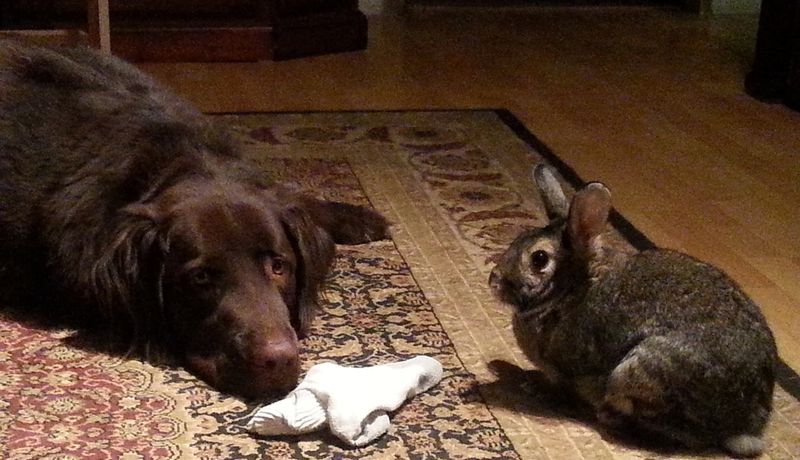
Rabbits are gentle creatures that can easily be frightened by a dog’s boisterous nature. Their timid disposition means they prefer quiet environments, which can clash with a dog’s playful antics. If a rabbit feels threatened, it may hide or even become aggressive.
Furthermore, dogs might see smaller animals like rabbits as prey, leading to potential chasing or barking. Special housing arrangements are necessary to ensure the rabbit’s safety and comfort. Rabbits can be delightful pets but require careful management to avoid conflicts with dogs.
Cat
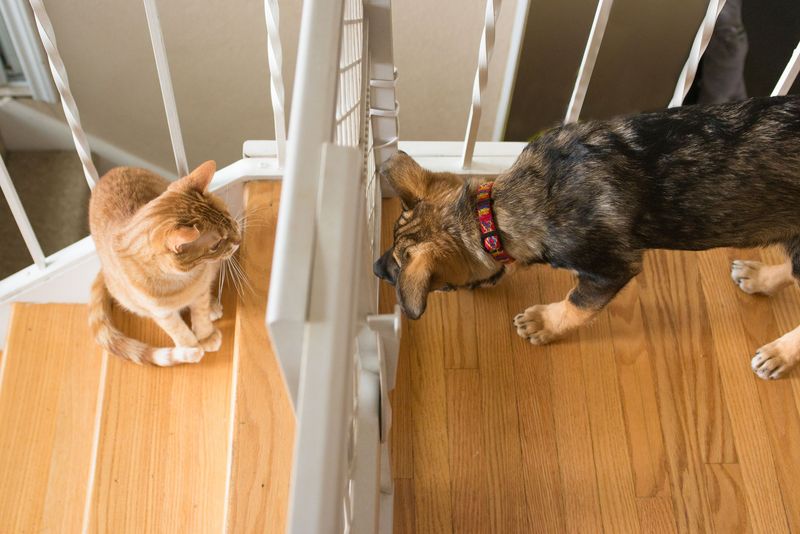
Cats and dogs have a notorious history of rivalry, although many do learn to coexist peacefully. A cat’s independent nature might provoke a dog’s curiosity or chase instinct. If not properly introduced, cats may feel threatened and resort to hissing or swatting.
Ensuring each pet has its own space is crucial to maintaining harmony. Cats need vertical spaces to escape and observe from a safe distance. With time and patience, a cat and dog can become friends, but the transition requires careful handling.
Hamster
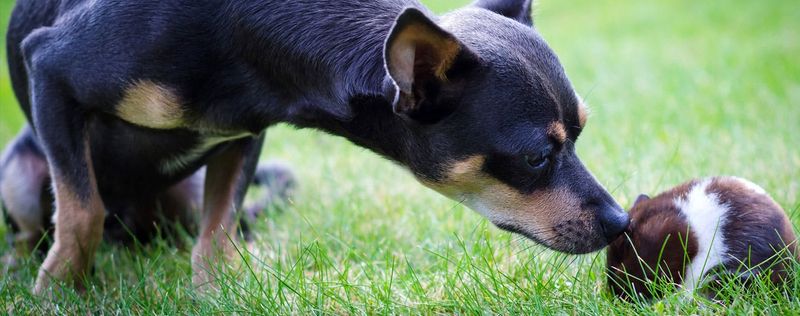
Hamsters are tiny, nocturnal creatures that thrive in quiet environments. The lively nature of a dog might unsettle a hamster, especially if the dog tries to paw at the cage or barks loudly.
A hamster’s delicate size makes it vulnerable, and it requires a peaceful setting to thrive. Securing the hamster’s habitat is essential to prevent any interaction that could harm it. While they make adorable pets, hamsters need a tranquil atmosphere, which might be challenging in a home with an enthusiastic dog.
Guinea Pig
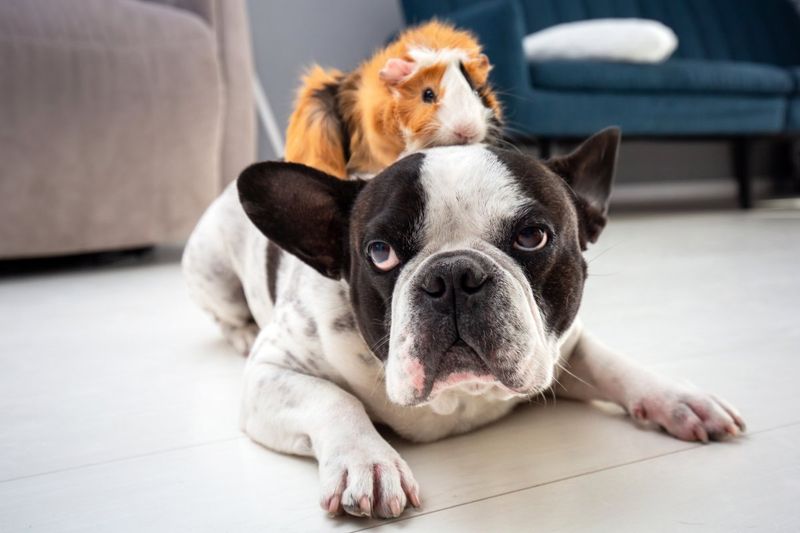
Guinea pigs are social creatures that enjoy companionship but can be overwhelmed by a dog’s energy. These small pets thrive in calm environments, and a dog’s playful nature might be too intense for them.
Guinea pigs communicate through various sounds, and an inquisitive dog might interfere with their social interactions. Providing a secure space for the guinea pig is essential to prevent stress. Despite their differences, guinea pigs and dogs can live under one roof with proper supervision and care.
Ferret
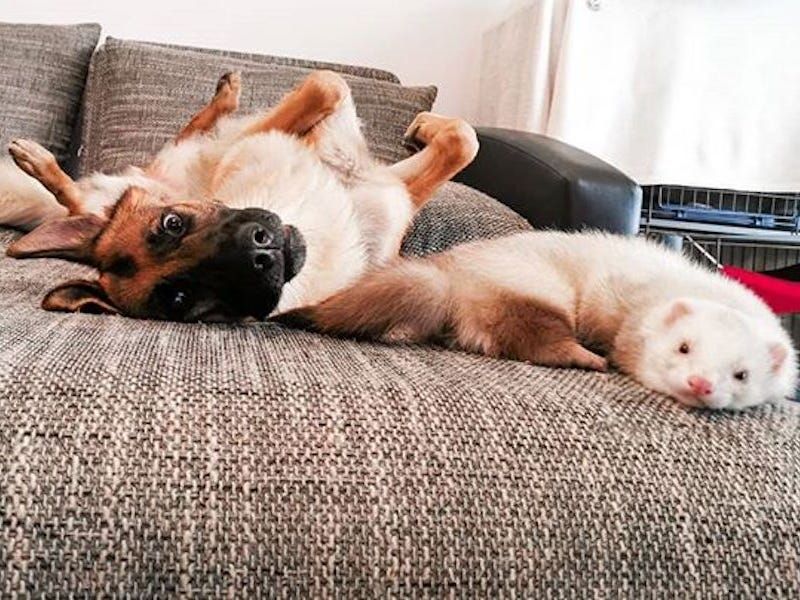
Ferrets are mischievous and energetic animals that love to explore. Their playful antics can either amuse or irritate a dog. Ferrets are small yet bold, and they may not back down from a confrontation.
While some dogs might be intrigued by a ferret’s lively behavior, others may feel challenged. It’s important to monitor interactions closely to prevent any potential conflicts. Ferrets need plenty of space to roam and play, which might not align with a dog’s territorial instincts.
Turtle

Turtles possess a calm demeanor and a slow pace, which might clash with a dog’s energetic lifestyle. Their hard shells offer protection, but a curious dog might still try to nudge or paw at them.
Turtles need a stable, quiet environment to thrive, and a dog’s presence could disrupt their peace. Ensuring the turtle’s habitat is secure and inaccessible to the dog is vital. While turtles and dogs can coexist, they require distinct environments to ensure both pets are content.
Snake

Snakes are intriguing pets but might not pair well with dogs due to their differing needs and temperaments. A dog’s curious nature could lead to unwanted attention towards the snake’s enclosure.
Snakes require specific environmental conditions, and a dog’s presence might cause stress or disturbance. Careful supervision is needed to ensure the snake’s safety, particularly from a dog that might see it as a plaything. Snakes are best kept in serene settings, away from the hustle and bustle of a dog’s antics.
Fish
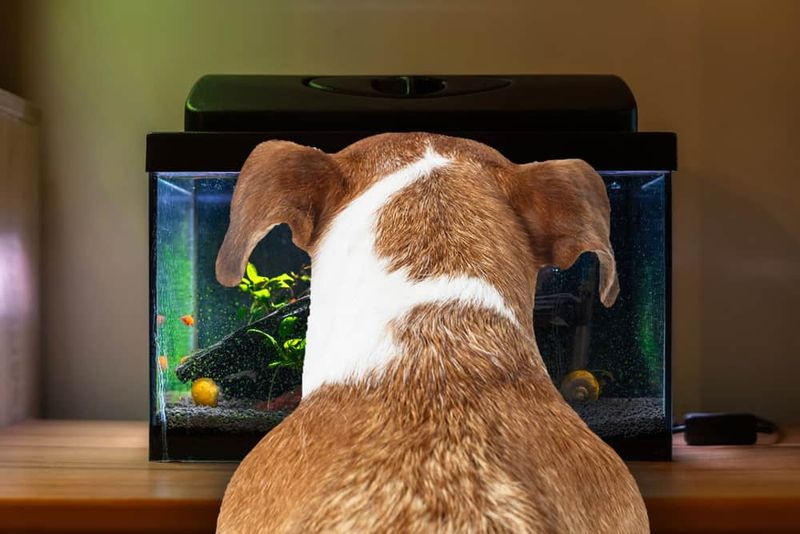
Aquatic pets like fish require a peaceful and stable atmosphere, which may be disrupted by a dog’s excitement. A dog’s barks or movements can startle fish, leading to stress.
Furthermore, a dog’s attempts to interact with the fish tank can lead to accidents or spills. Keeping the aquarium secure and out of the dog’s reach is essential. While dogs and fish can coexist in a household, they thrive best when their environments remain separate and undisturbed.
Chinchilla
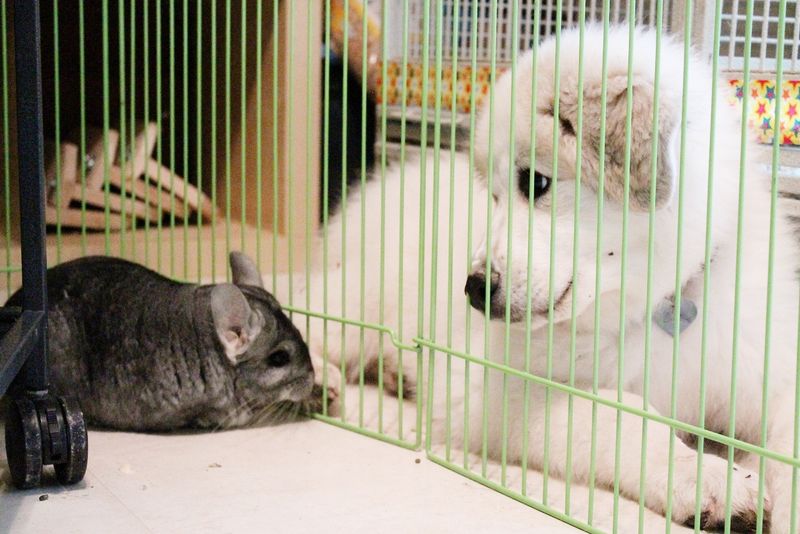
Chinchillas are sensitive creatures that prefer calm, quiet settings. Their delicate nature means that a boisterous dog can cause them anxiety. These pets have specific needs, such as dust baths and spacious cages, that require consideration.
A dog’s curiosity might disturb a chinchilla, and their interactions should be monitored closely. Ensuring that the chinchilla has a secure and quiet space to retreat to is crucial. Despite their differences, with careful management, chinchillas and dogs can live harmoniously under one roof.
Hedgehog
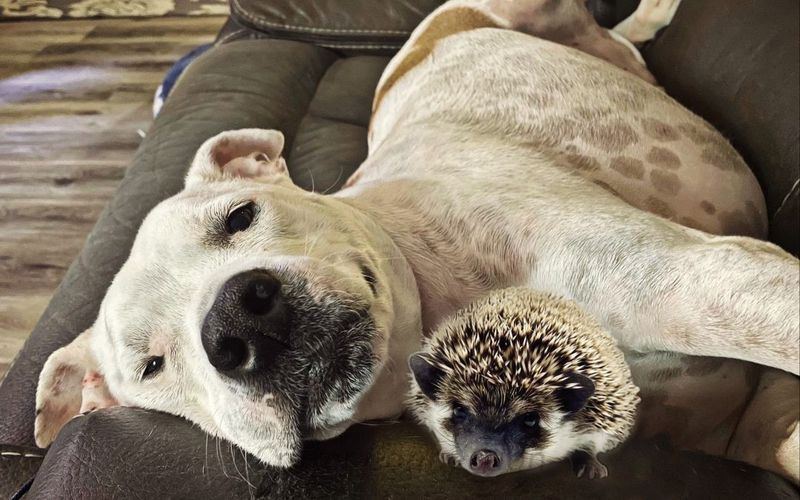
Hedgehogs, with their spiky exterior, are fascinating pets that require a gentle approach. Their nocturnal habits mean they are most active when dogs are resting, which can work in their favor.
However, a dog’s inquisitive nature might lead to unwanted attention, causing stress to the hedgehog. Providing a secure habitat where the hedgehog can explore without interference is essential. Hedgehogs offer unique companionship but require careful consideration when living with a dog.
Bird
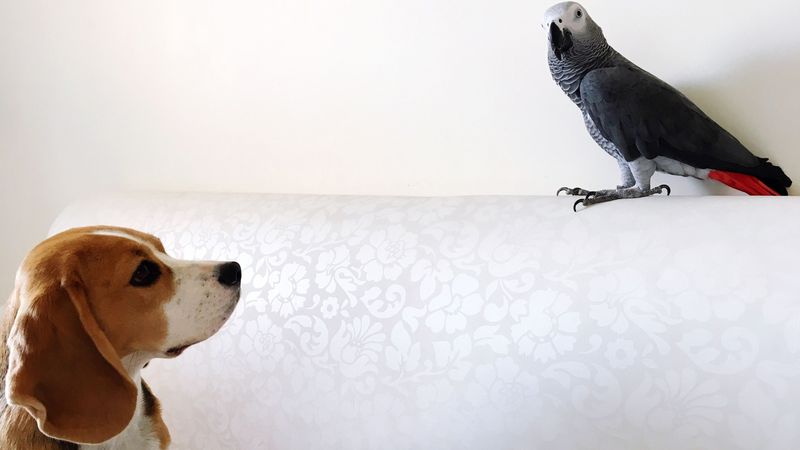
Birds, with their melodic tunes and lively behaviors, can captivate any household. However, their flurry of activity might intrigue a curious dog, leading to unwanted attention.
Dogs might bark or jump in excitement, which can startle the bird or cause stress. Ensuring that the bird’s cage is out of reach is crucial to maintaining harmony. While birds and dogs can coexist, their interactions should be supervised to prevent conflicts.
Lizard
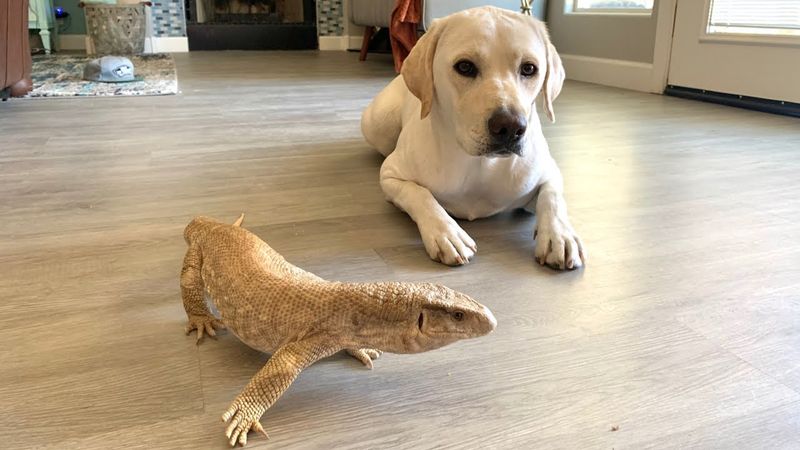
Lizards, with their unique appearances and behaviors, are captivating pets but might find a dog’s presence unsettling. These reptiles need specific conditions to thrive, such as controlled temperatures and humidity.
A dog’s curiosity might lead to unwanted disturbances around the lizard’s enclosure. Ensuring that the lizard’s habitat is secure and dog-proof is essential for its well-being. Lizards and dogs can share a household, but their environments must be kept separate to ensure harmony.
Tarantula

Tarantulas, with their hairy legs and intriguing behaviors, are unique pets that require a calm environment. A dog’s boisterous nature might disrupt a tarantula’s peace, causing unnecessary stress.
These arachnids need specific living conditions, and a dog’s attention can lead to accidents. Keeping the tarantula’s enclosure secure and out of reach is vital. While not the most conventional pairing, tarantulas and dogs can coexist with careful management and separation of their spaces.
Frog
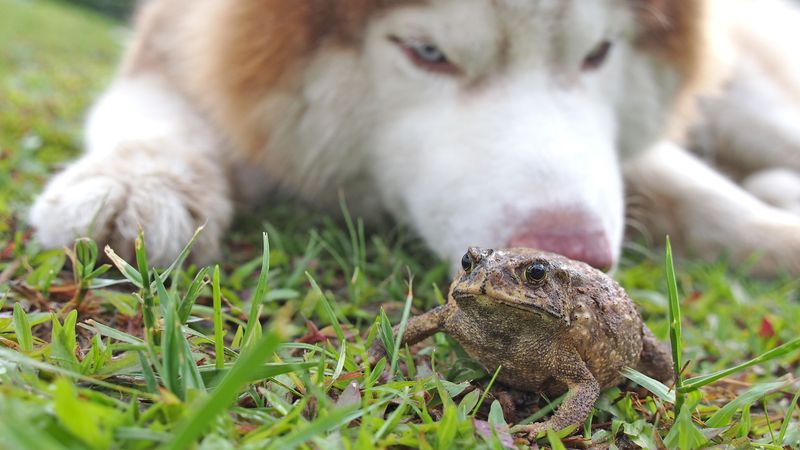
Frogs, with their gentle croaks and smooth skin, make intriguing pets but require a peaceful setting to thrive. Their delicate nature might not mesh well with a dog’s energetic behavior.
A curious dog might disturb the frog’s habitat, leading to stress or potential harm. Ensuring the frog’s enclosure is secure and inaccessible is crucial. Frogs and dogs can live under the same roof, but their environments need to be kept distinct and peaceful.
Sugar Glider

Sugar gliders, with their ability to glide and their social nature, are fascinating pets. Their nocturnal habits mean they are active when dogs are resting, reducing direct interactions.
However, a dog’s curiosity might pose a risk if the glider is outside its enclosure. Ensuring a safe and secure habitat for the sugar glider is essential to prevent accidents. While sugar gliders and dogs have different needs, they can coexist with careful supervision and separation of spaces.

